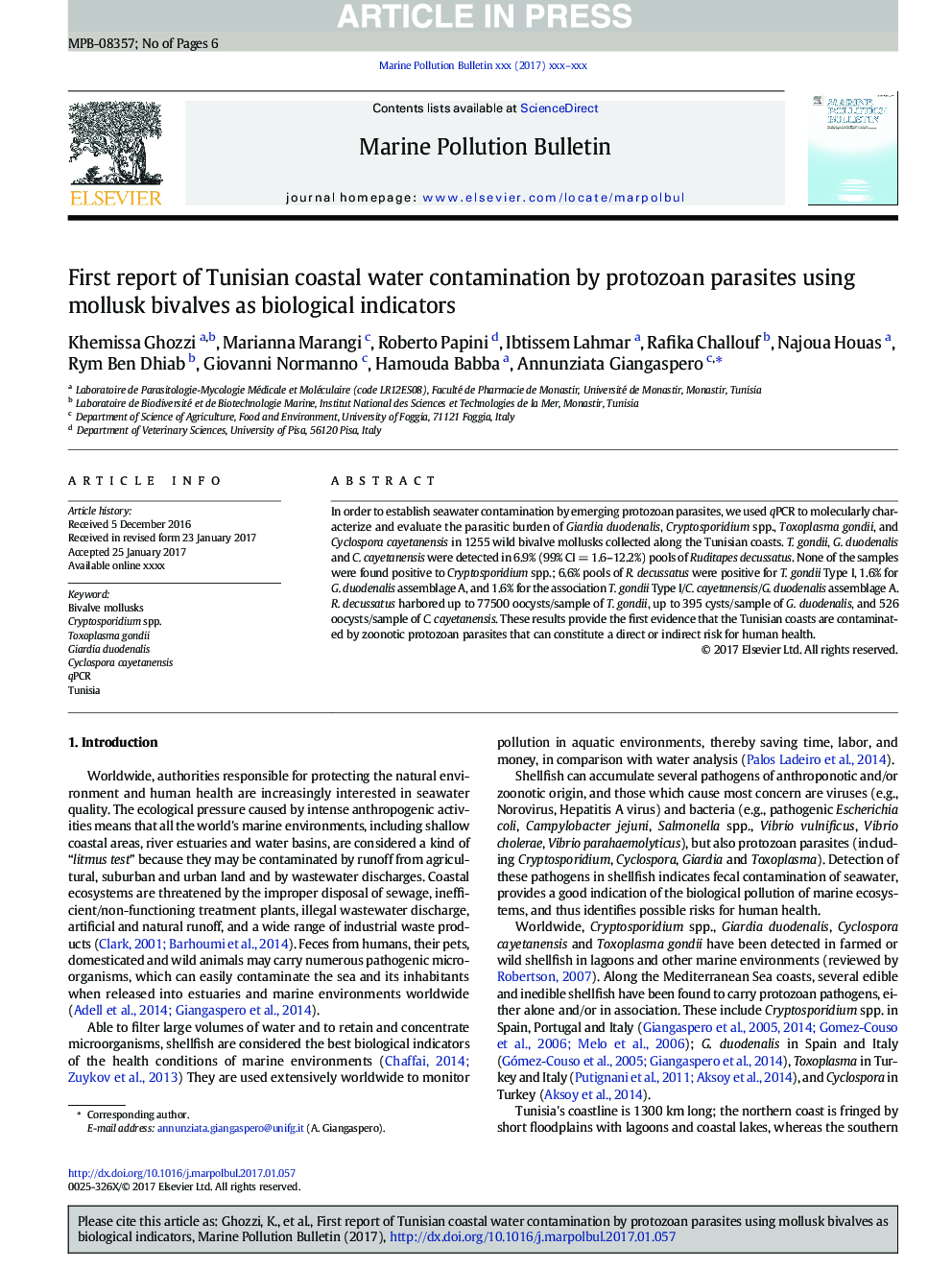| Article ID | Journal | Published Year | Pages | File Type |
|---|---|---|---|---|
| 5757529 | Marine Pollution Bulletin | 2017 | 6 Pages |
Abstract
In order to establish seawater contamination by emerging protozoan parasites, we used qPCR to molecularly characterize and evaluate the parasitic burden of Giardia duodenalis, Cryptosporidium spp., Toxoplasma gondii, and Cyclospora cayetanensis in 1255 wild bivalve mollusks collected along the Tunisian coasts. T. gondii, G. duodenalis and C. cayetanensis were detected in 6.9% (99% CIÂ =Â 1.6-12.2%) pools of Ruditapes decussatus. None of the samples were found positive to Cryptosporidium spp.; 6.6% pools of R. decussatus were positive for T. gondii Type I, 1.6% for G. duodenalis assemblage A, and 1.6% for the association T. gondii Type I/C. cayetanensis/G. duodenalis assemblage A. R. decussatus harbored up to 77500 oocysts/sample of T. gondii, up to 395 cysts/sample of G. duodenalis, and 526 oocysts/sample of C. cayetanensis. These results provide the first evidence that the Tunisian coasts are contaminated by zoonotic protozoan parasites that can constitute a direct or indirect risk for human health.
Keywords
Related Topics
Physical Sciences and Engineering
Earth and Planetary Sciences
Oceanography
Authors
Khemissa Ghozzi, Marianna Marangi, Roberto Papini, Ibtissem Lahmar, Rafika Challouf, Najoua Houas, Rym Ben Dhiab, Giovanni Normanno, Hamouda Babba, Annunziata Giangaspero,
